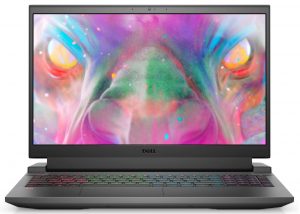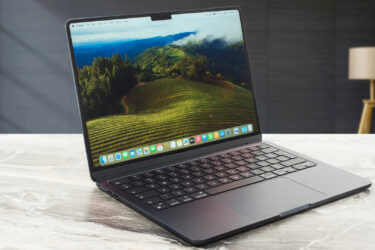[In-Depth Comparison] Dell G15 5520 vs Dell G15 5511 – More differences than similarities?
 Dell is an underrated player in the gaming laptop world and while their machines do have their issues, we believe they carry way more positives than negatives.
Dell is an underrated player in the gaming laptop world and while their machines do have their issues, we believe they carry way more positives than negatives.
Here we have two Dell G15 models, one from 2022 and one from last year. We’ll be comparing them to see how they do against each other, considering that GPUs haven’t evolved during this last year and NVIDIA and AMD’s new RTX 4000 and RDNA 3 GPUs are still far away from having mobile SKUs, so Ampere will be here for a while.
However, if you want more than GPU performance from the Dell G15 laptops, the CPUs will be important, as the new 5520 uses Alder Lake, while the older laptop has Tiger Lake.
Without wasting precious time, here’s our in-depth comparison between the Dell G15 5520 and the G15 5511.
Dell G15 5520: Full Specs / In-depth Review
Dell G15 5511: Full Specs / In-depth Review
Dell G15 5520 configurations:
Dell G15 5511 configuration:
Contents
Design and construction
To save costs and lower the price, Dell reused the same chassis for the new laptop. However, that doesn’t mean the body can’t be improved, as the newer G15 5522 comes in with a nearly 300-gram weight reduction. The thickness has increased slightly, but overall we’re very happy with Dell’s progress. The design itself is quite aggressive, with a lot of sharpness going around the laptop. It reminds us of an F-117 stealth fighter, with sharp angles and lines on the lid. The backside is quite aggressive and bulky but also takes the hot elements away from the keyboard, which is good for comfort. Lastly, the sides feature bold red G-lettering.
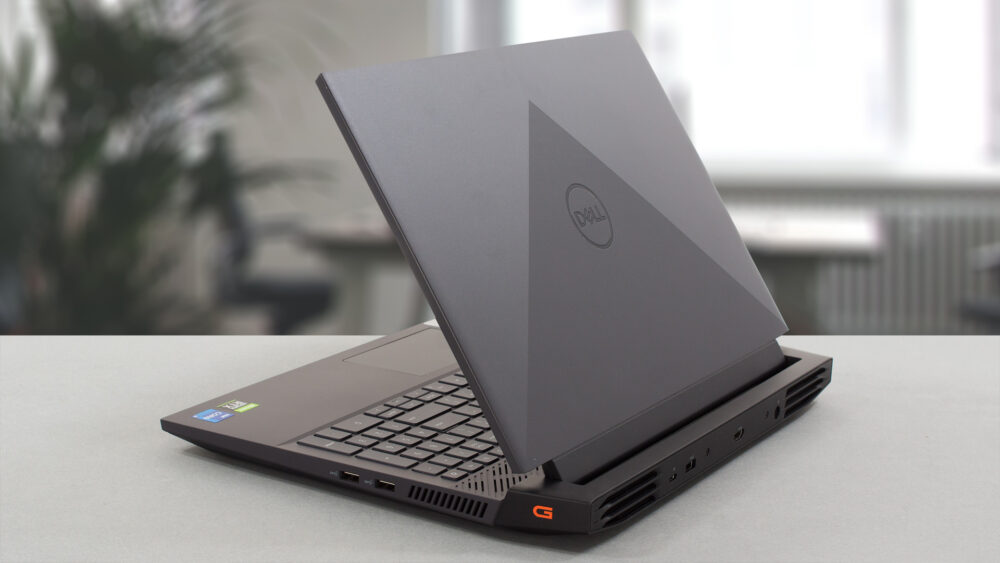
Keyboard and touchpad
The base on the two notebooks looks exactly the same, with a full-sized keyboard, a huge grill on top, and a touchpad on the bottom. The board mimics a lot of the Vostros, something that really isn’t ideal for gaming. The key travel isn’t as long as we’d like, which is a travesty considering the thick profile. As for the touchpad, on both units, the surface was a bit rough, but the pads were overall responsive.
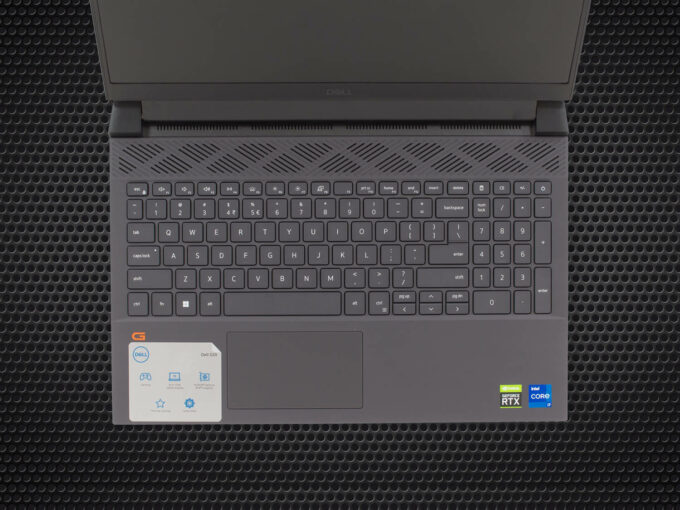 Dell G15 5520
Dell G15 5520 Dell G15 5511
Dell G15 5511Ports
In terms of ports, both Dell laptops are up to some trickery, reserving the Thunderbolt 4 support for the higher-specced RTX 3060 configurations.
The G15 5520 comes with three USB Type-A 3.2 (Gen. 1) ports, one Type-C 3.2 (Gen. 2) or Thunderbolt 4 port depending on the configuration, an HDMI 2.1 port, an Ethernet port, and a 3.5 mm audio jack.
The older laptop comes with three Type-A 3.2 (Gen. 1) ports, but two of them drop to 2.0 speeds if you get a version with the RTX 3050 or the RTX 3050 Ti. Then we get the Type-C 3.2 (Gen. 2) or Thunderbolt 4 port, along with the HDMI 2.1 port, the LAN port, and the audio jack.
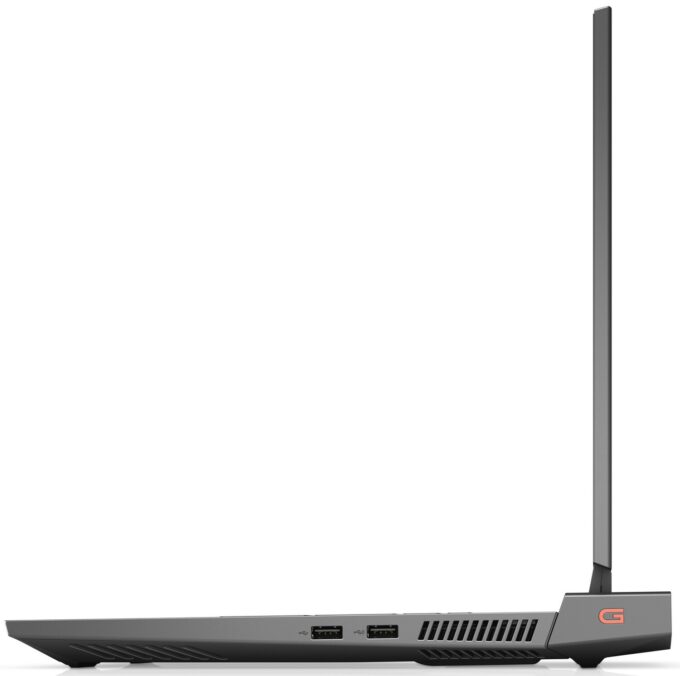
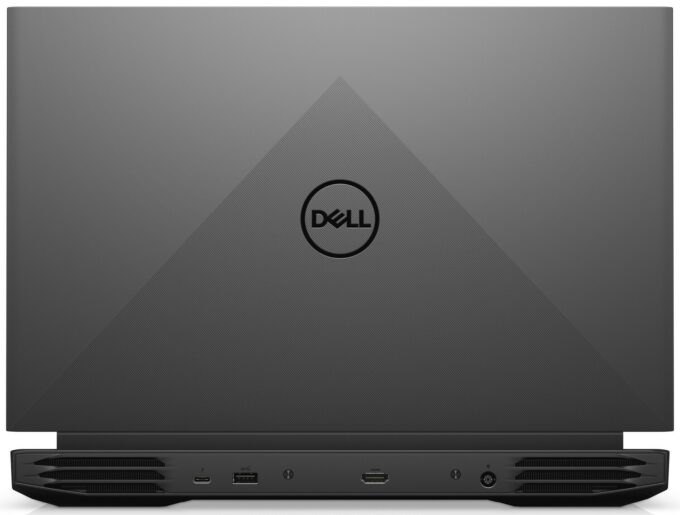
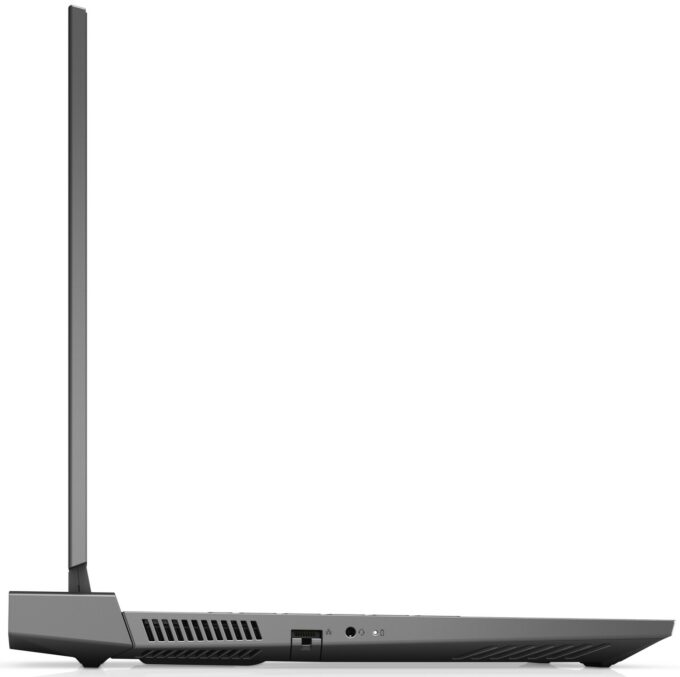
Disassembly, upgrade options
Both laptops are held together by 8 Phillips-head screws. The newer device gets two SODIMM slots for DDR5 memory and one M.2 SSD slot for PCIe Gen 4 drives. The G15 5511 comes with two RAM slots for DDR4 memory and two SSD slots.
 Dell G15 5520
Dell G15 5520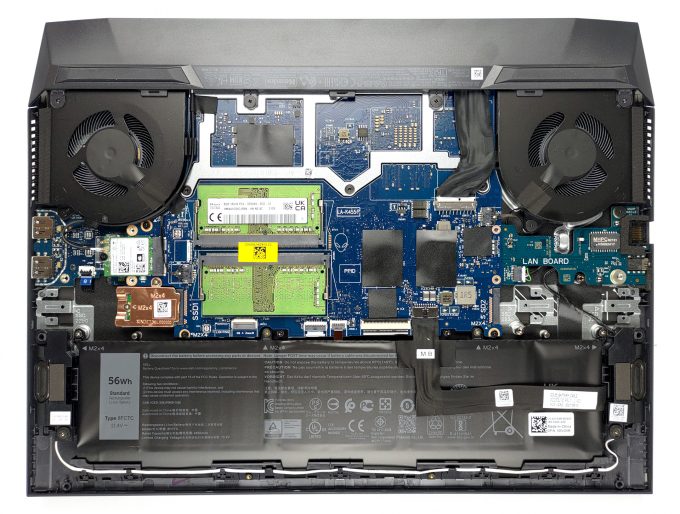 Dell G15 5511
Dell G15 5511Spec sheet
Dell G15 5520 series
- Dimensions
- 357.26 x 272.11 x 26.9 mm (14.07" x 10.71" x 1.06")
- Weight
- 2.52 kg (5.6 lbs)
- Price
- Starting at $1986.40
Dell G15 5511 series
- Dimensions
- 357.26 x 272.11 x 21.32 - 25.33 mm (14.07" x 10.71" x 0.84")
- Weight
- 2.81 kg (6.2 lbs)
- Price
- Starting at $849.99
Display quality
Both laptops come with a 120Hz IPS FHD display. There are higher refresh rate options as well, which also come with good color coverage, in case you want to dive into Creator work. The displays do come from different manufacturers, so there will be some small, unnoticeable differences. The two panels have a pixel density of 142 PPI, a pitch of 0.18 x 0.18 mm, and a Retina distance of 60 cm.
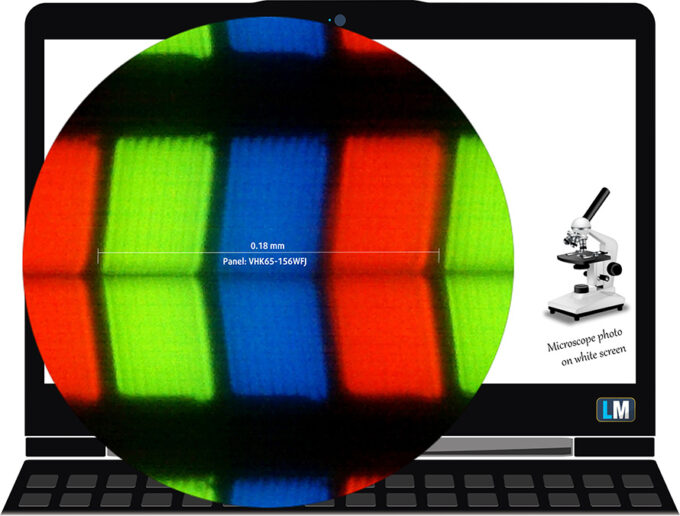 Dell G15 5520
Dell G15 5520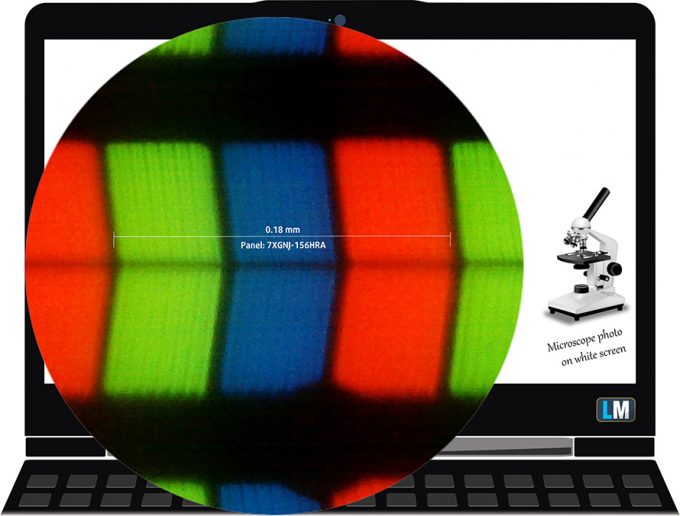 Dell G15 5511
Dell G15 5511The viewing angles are excellent, as you can see in the reference images below.
 Dell G15 5520
Dell G15 5520 Dell G15 5511
Dell G15 5511The panel of the G15 5520 reaches a peak brightness of 261 nits in the middle of the screen and 251 nits as an average for the whole area, with a maximum deviation of 11%. The contrast ratio comes in at 1080:1.
The older laptop gets a slightly less bright display, with a max brightness of 255 nits in the middle of the screen and 244 nits average across the surface with a maximum deviation of 8%, however, the contrast ratio is higher, at 1540:1.
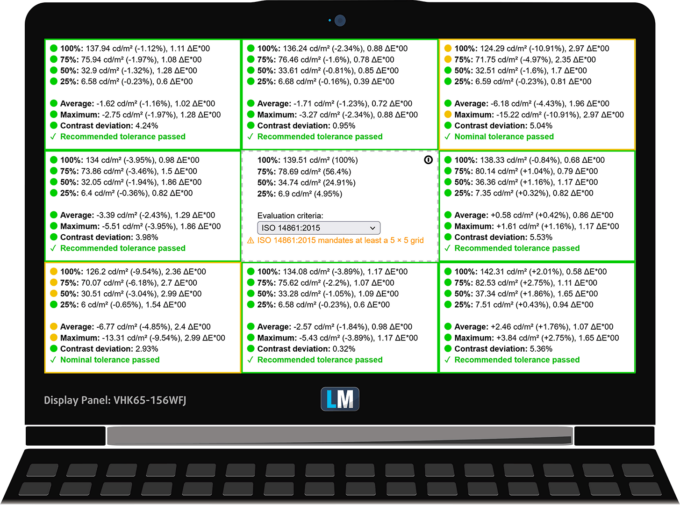 Dell G15 5520
Dell G15 5520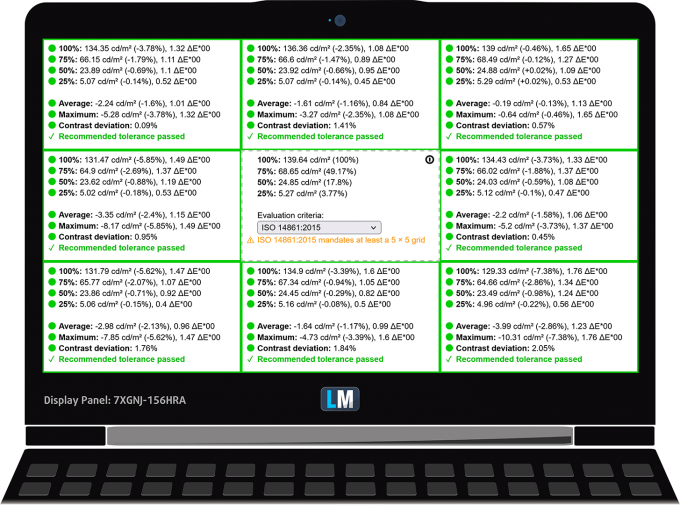 Dell G15 5511
Dell G15 5511Color coverage
To make sure we are on the same page, we would like to give you a little introduction to the sRGB color gamut and the Adobe RGB. To start, there’s the CIE 1976 Uniform Chromaticity Diagram that represents the visible specter of colors by the human eye, giving you a better perception of the color gamut coverage and the color accuracy.
Inside the black triangle, you will see the standard color gamut (sRGB) that is being used by millions of people on HDTV and on the web. As for the Adobe RGB, this is used in professional cameras, monitors, etc for printing. Basically, colors inside the black triangle are used by everyone and this is the essential part of the color quality and color accuracy of a mainstream notebook.
Still, we’ve included other color spaces like the famous DCI-P3 standard used by movie studios, as well as the digital UHD Rec.2020 standard. Rec.2020, however, is still a thing of the future and it’s difficult for today’s displays to cover that well. We’ve also included the so-called Michael Pointer gamut, or Pointer’s gamut, which represents the colors that naturally occur around us every day.
The yellow dotted line shows the color coverage of both Dell G15 laptops. Both show insufficient coverage, with 55% sRGB coverage for the G15 5520 and 54% sRGB coverage for the G15 5511.
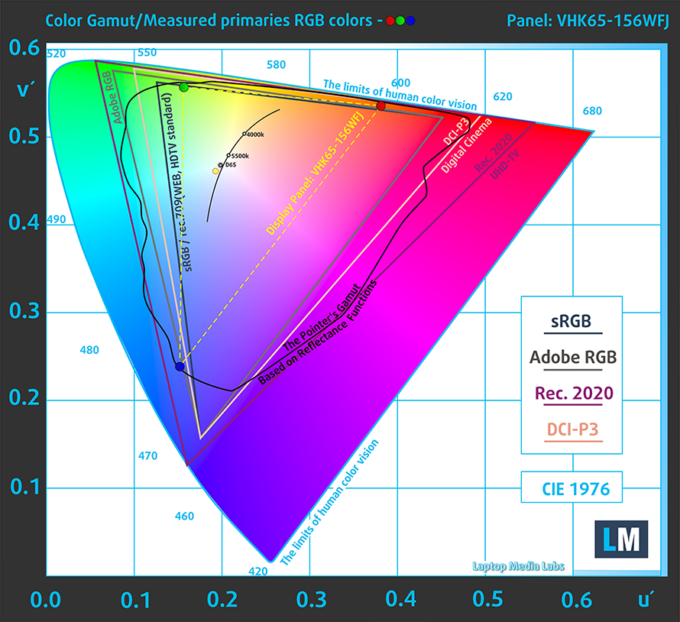 Dell G15 5520
Dell G15 5520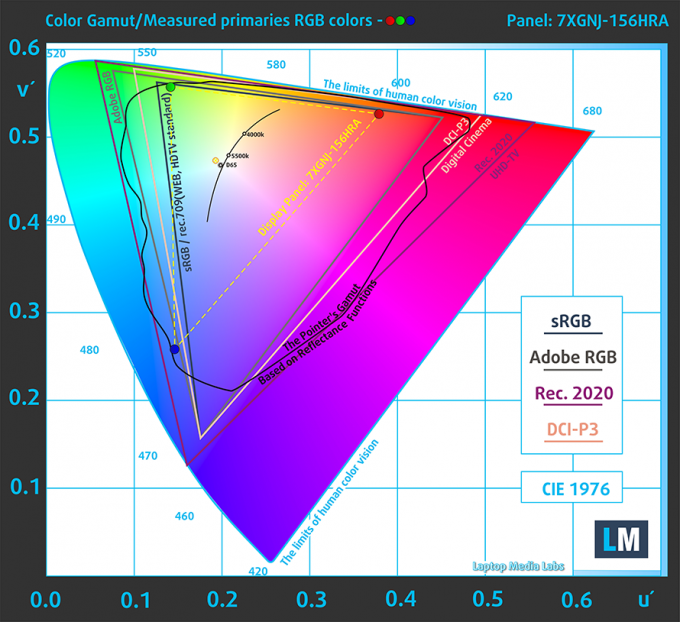 Dell G15 5511
Dell G15 5511Color accuracy
We tested the accuracy of the display with 24 commonly used colors like light and dark human skin, blue sky, green grass, orange, etc. You can check out the results in factory condition and also, with the “Design and Gaming” profile.
Below you can check the results from the test of both laptops, with both the factory settings (left) and with our “Design and Gaming” profile applied (right).
Both laptops are positively affected by our profile, however, the dE value isn’t lowered by enough to make the laptops accurate for Creator work.
Dell G15 5520
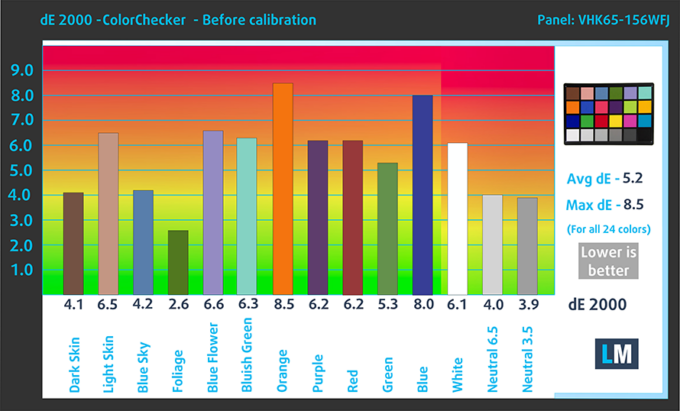

Dell G15 5511
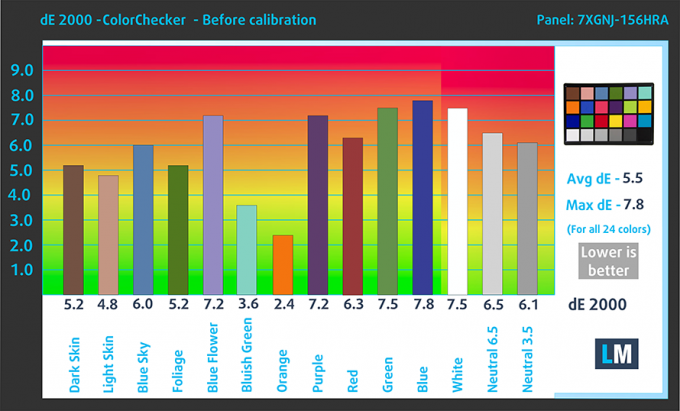

Response time (Gaming capabilities)
We test the reaction time of the pixels with the usual “black-to-white” and “white-to-black” method from 10% to 90% and vice versa.
The Dell G15 5511’s panel has a slightly faster response time, with a Fall + Rise time of 22.9 ms.
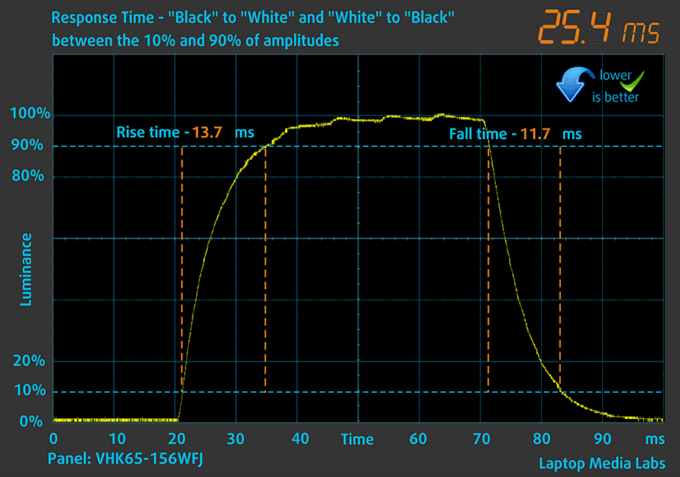 Dell G15 5520
Dell G15 5520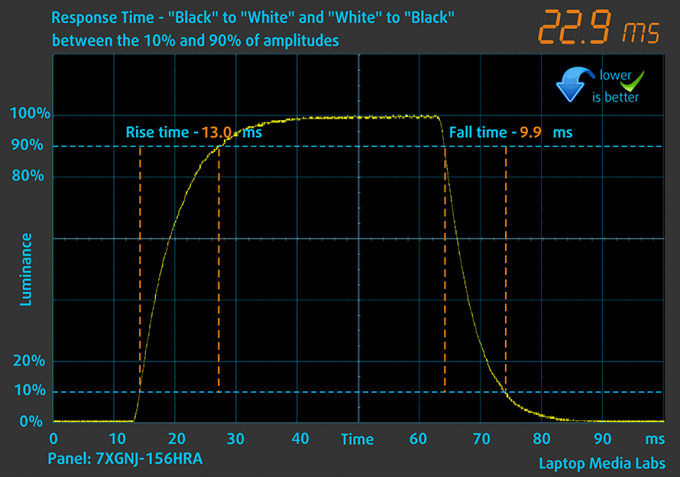 Dell G15 5511
Dell G15 5511Health impact – PWM / Blue light
PWM – Screen flickering
Pulse-width modulation (PWM) is an easy way to control monitor brightness. When you lower the brightness, the light intensity of the backlight is not lowered, but instead turned off and on by the electronics with a frequency indistinguishable to the human eye. In these light impulses, the light/no-light time ratio varies, while brightness remains unchanged, which is harmful to your eyes. You can read more about that in our dedicated article on PWM.
Both laptops show no PWM usage across all brightness levels.
 Dell G15 5520
Dell G15 5520 Dell G15 5511
Dell G15 5511Blue light emissions
Installing our Health-Guard profile not only eliminates PWM but also reduces the harmful Blue Light emissions while keeping the colors of the screen perceptually accurate. If you’re not familiar with the Blue light, the TL;DR version is – emissions that negatively affect your eyes, skin, and your whole body. You can find more information about that in our dedicated article on Blue Light.
Buy our profiles
Dell G15 5520 15.6″ FHD IPS LG VHK65-156WFJ (LGD06D1, LP156WFJ-SPB1): Buy our profiles
Dell G15 5511 15.6″ Innolux 7XGNJ-156HRA (CMN1522) (FHD, 1920 × 1080): Buy our profiles
Sound
Both laptops have their speakers on the bottom. Interestingly, while both setups show no deviations across the entire frequency range, they perform slightly differently in the sound test. Additionally, the sound of the older laptop is slightly quieter.
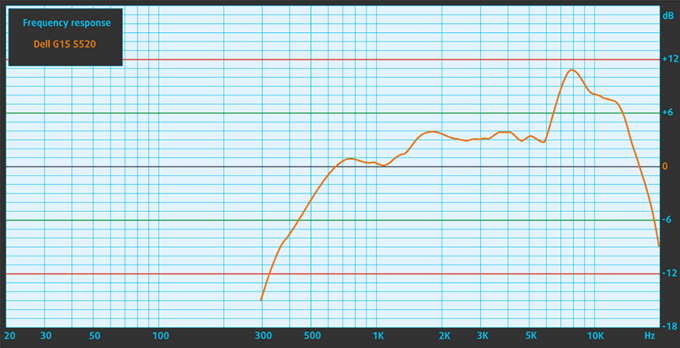 Dell G15 5520
Dell G15 5520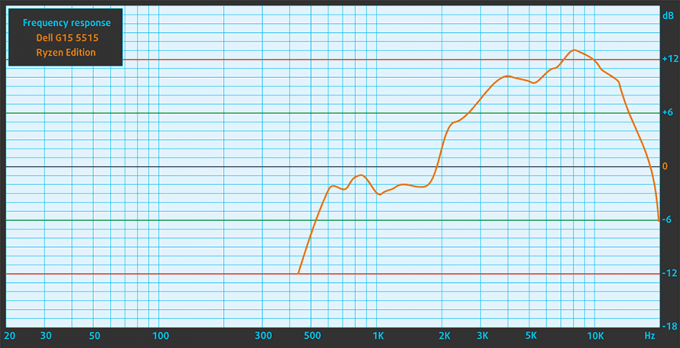 Dell G15 5511
Dell G15 5511Battery
Both devices use a 56Wh battery pack. Still, last year’s notebook lasts for longer, offering 2 hours and 58 minutes more in web browsing and 40 minutes more in video playback. The way we test our notebooks is with the Windows Better performance setting turned on, screen brightness adjusted to 120 nits, and all other programs turned off except for the one we are testing the notebook with.
In order to simulate real-life conditions, we used our own script for automatic web browsing through over 70 websites.
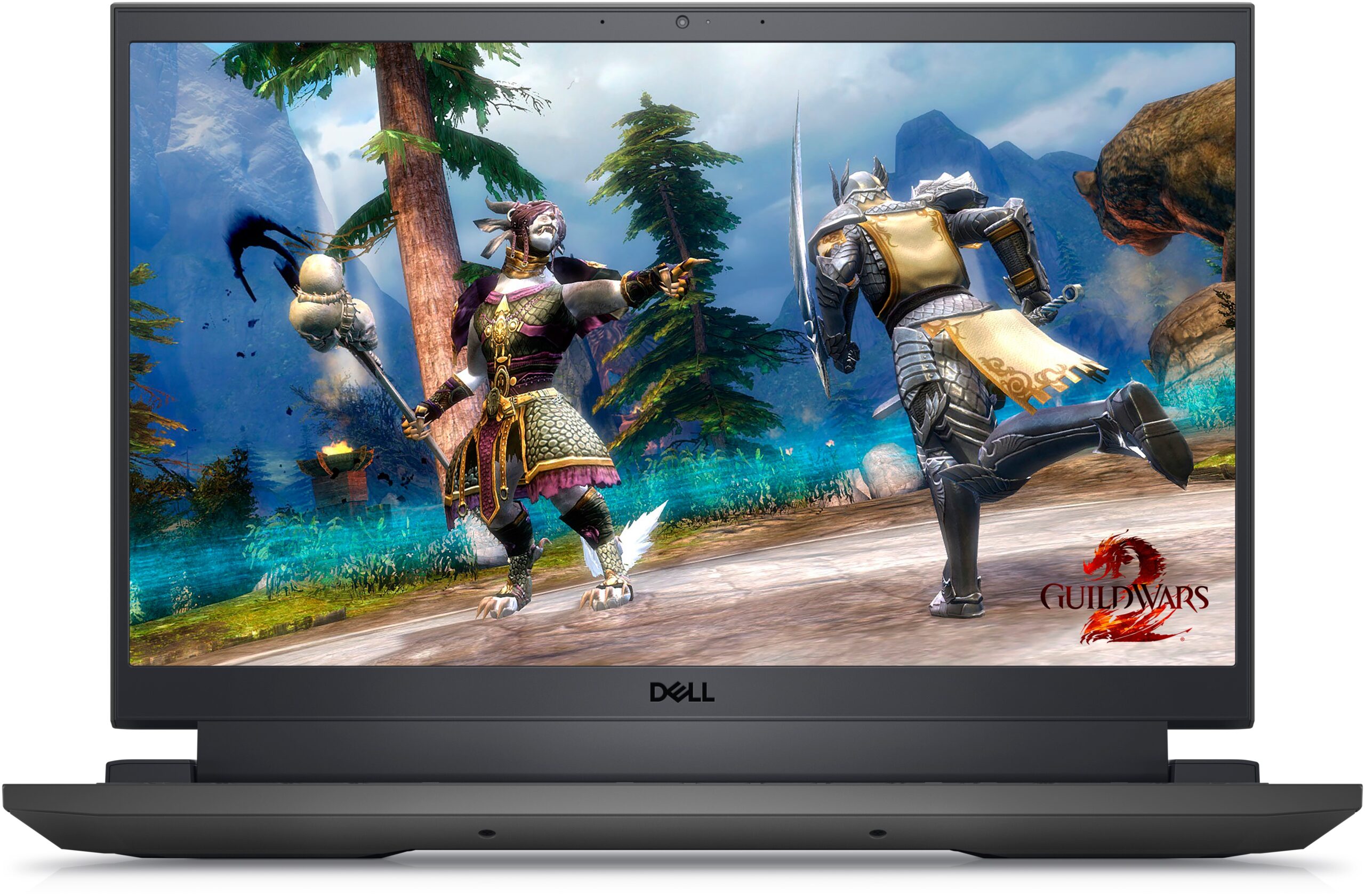
Performance
The Dell G15 5520 has Alder Lake H-series processors: the Core i5-12500H, Core i7-12700H, and Core i9-12900H. In terms of graphics, there’s the RTX 3050, RTX 3050 Ti, RTX 3060, and RTX 3070 Ti.
The Dell G15 5511 comes with Tiger lake H45 processors: the Core i5-11260H, the Core i5-11400H, and the Core i7-11800H. As for graphics, you get the same choices as the G15 5520, minus the 3070 Ti.
CPU benchmarks
Here we tested the Core i7-12700H and the Core i7-11800H. The Alder lake chip is noticeably faster in both 3D and 2D Rendering, scoring 31% higher in Cinebench 20 and being nearly a second quicker in Photoshop.
Results are from the Cinebench R23 CPU test (the higher the score, the better)
Results are from our Photoshop benchmark test (the lower the score, the better)
GPU benchmarks
Here we tested a 95W RTX 3050 Ti inside both laptops. Interestingly, the GPU inside the Tiger Lake-equipped laptop is 3% quicker in 3DMark Fire Strike and in Unigine Superposition.
Results are from the 3DMark: Time Spy (Graphics) benchmark (higher the score, the better)
Results are from the 3DMark: Fire Strike (Graphics) benchmark (higher the score, the better)
Results are from the 3DMark: Wild Life benchmark (higher the score, the better)
Results are from the Unigine Superposition benchmark (higher the score, the better)
Gaming tests
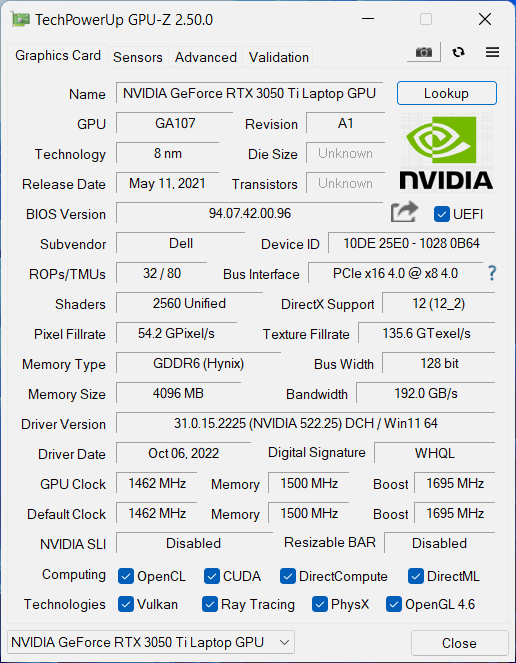 Dell G15 5520
Dell G15 5520 Dell G15 5511
Dell G15 5511| Tom Clancy’s Ghost Recon Wildlands | Full HD, Medium (Check settings) | Full HD, High (Check settings) | Full HD, Very High (Check settings) |
|---|---|---|---|
| Dell G15 5520 – RTX 3050 Ti (95W) | 90 fps (+5%) | 82 fps (+4%) | 71 fps (+3%) |
| Dell G15 5511 – RTX 3050 Ti (95W) | 86 fps | 79 fps | 69 fps |

| Shadow of the Tomb Raider (2018) | Full HD, Medium (Check settings) | Full HD, High (Check settings) | Full HD, Highest (Check settings) |
|---|---|---|---|
| Dell G15 5520 – RTX 3050 Ti (95W) | 84 fps | 80 fps | 54 fps (+2%) |
| Dell G15 5511 – RTX 3050 Ti (95W) | 93 fps (+11%) | 83 fps (+4%) | 53 fps |
Temperatures and comfort
Both laptops use the same cooling setup, with four heat pipes and two fans. Two heat pipes are shared between the CPU and GPU, while they get one separate pipe for each of them as well.
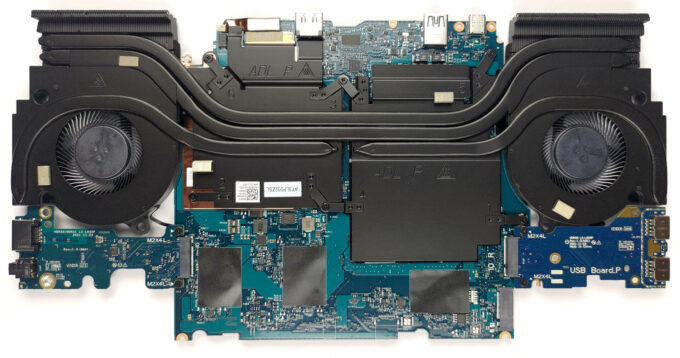 Dell G15 5520
Dell G15 5520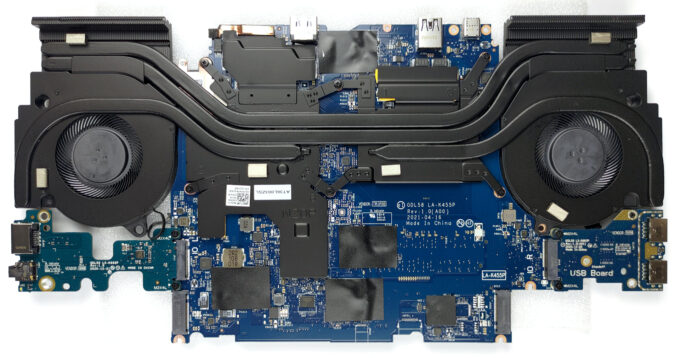 Dell G15 5511
Dell G15 5511Max CPU load
| Intel Core i7-12700H (45W TDP) | 0:02 – 0:10 sec | 0:15 – 0:30 sec | 10:00 – 15:00 min |
|---|---|---|---|
| Dell G15 5520 | 3.62 GHz @ 2.78 GHz @ 90°C @ 111W | 3.41 GHz @ 2.68 GHz @ 91°C @ 98W | 3.18 GHz @ 2.49 GHz @ 83°C @ 87W |
| HP Victus 16 (16-d1000) | 3.72 GHz @ 2.85 GHz @ 76°C @ 115W | 3.33 GHz @ 2.58 GHz @ 78°C @ 96W | 2.37 GHz @ 1.89 GHz @ 65°C @ 45W |
The cooling of the G15 performs really well, considering the affordable nature of the device. It maintains high clock speeds and wattage even in long runs, which is admirable. More importantly, it outshines some of its competitors, like the Victus 16.
| Intel Core i7-11800H (45W TDP) | 0:02 – 0:10 sec | 0:15 – 0:30 sec | 10:00 – 15:00 min | Max Fans |
|---|---|---|---|---|
| Dell G15 5511 | 3.67 GHz (B+60%) @ 97°C @ 100W | 3.54 GHz (B+54%) @ 98°C @ 91W | 3.43 GHz (B+49%) @ 93°C @ 79W | – |
The cooling just works, as it can take care of the Core i7-11800H as well. The CPU maintains very high speeds, but it runs quite hotter as well.
Real-life gaming
| NVIDIA GeForce RTX 3050 Ti | GPU frequency/ Core temp (after 2 min) | GPU frequency/ Core temp (after 30 min) | GPU frequency/ Core temp (Max fan) |
|---|---|---|---|
| Dell G15 5520 | 1802 MHz @ 73°C @ 90W | 1800 MHz @ 74°C @ 90W | – |
| Dell G15 5511 | 1882 MHz @ 71°C @ 88W | 1878 MHz @ 72°C @ 89W | – |
Both GPUs can’t max out their 95W power limits, however, they get pretty close. Still, the one inside the older laptop runs at higher clock speeds and lower temperatures.
Comfort during combined load
The hotter elements are moved to the vents at the back, so the base remains very cool on both laptops. Noise can get quite loud when you switch up to a more aggressive performance preset. Both laptops are very cool, with only a single degree difference between the two, in favor of the older G15 5511.
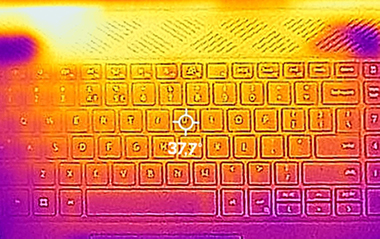 Dell G15 5520
Dell G15 5520 Dell G15 5511
Dell G15 5511Verdict
The two G15 laptops are incredibly similar, thanks to Dell reusing a lot of parts. This makes them incredibly equal in a lot of areas. Both devices come with a plastic design and employ the same chassis. Despite that, the newer laptop is 300 grams lighter, while being slightly thicker, a tradeoff we’d gladly make. The keyboard on both laptops doesn’t really do justice to the rest of the package, as it feels more like an office keyboard. The touchpad is good, on the other hand, as while the surface isn’t the smoothest, the pad is quick and responsive.
The G15 5520 has a better port selection and while Thunderbolt 4 support is reserved for the RTX 3060 models, you get rid of the USB 2.0 ports in favor of USB 3.2 (Gen. 1) ports. Still, if you pick the Dell G15 5511, you can always use the 2.0 ports for a mouse or any other peripheral.
The older notebook leads with its upgradeability, offering an extra M.2 slot for one more SSD, meaning that you don’t need to have a spare drive lying around or have to migrate files. The displays are very similar, as the entry-level FHD 120Hz panels come with around 250 nits of brightness and mediocre color coverage and accuracy. If you need a panel for Creator work, there are other options with either 100% sRGB or 100% DCI-P3 coverage.
Both laptops have the same 56Wh battery capacity, however, the G15 5511 lasts for longer by 3 hours in web browsing and 40 minutes of video playback. Moving to performance, and the Core i7-12700H makes quick work of its Tiger lake predecessor, the Core i7-11800H. For an unknown reason, the GPU inside the Tiger Lake-powered device has slightly higher benchmark scores, as well as reaching higher clock speeds in our stress test.
Lastly, in terms of cooling, the two G15s use the same setup. They manage to keep their CPUs under their max operating temperatures, while clock speeds and wattage are high, which leads to high performance. The same can be said bout the GPUs, albeit both can’t reach their 95W power limit. Comfort-wise, the laptops keep the keyboards cool, while noise can get loud if you tinker with the presets.
Both devices offer something to stand out, so you have to make a decision for yourself about what you value more. The gaming performance is the same, as GPUs haven’t changed in the past two years. What’s more, you can probably get a G15 5511 unit with a better display with higher color coverage for the same price as a G15 5520 with the base 120Hz display, a move that we would certainly consider if we wanted to enter the Creator world on a budget.
Why choose the Dell G15 5520?
- 300 grams lighter
- More CPU performance
- Faster USB ports
Why choose the Dell G15 5511?
- Longer battery life
- Offers an extra M.2 slot for storage
- Slightly more GPU performance
Dell G15 5520: Full Specs / In-depth Review
Dell G15 5511: Full Specs / In-depth Review
Dell G15 5520 configurations:
Dell G15 5511 configuration:
